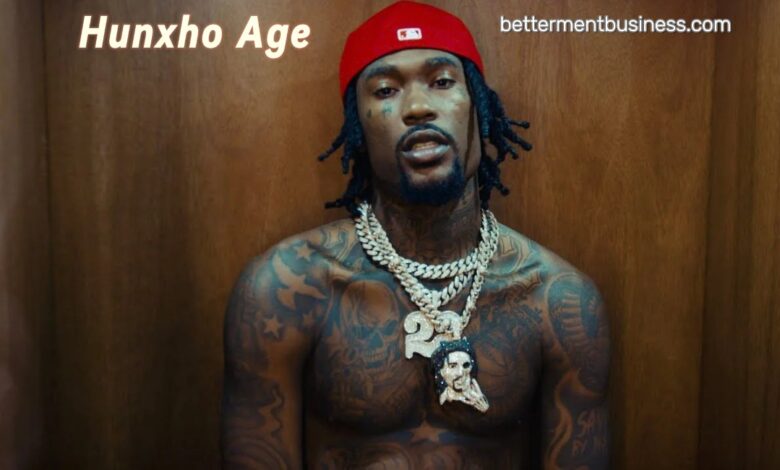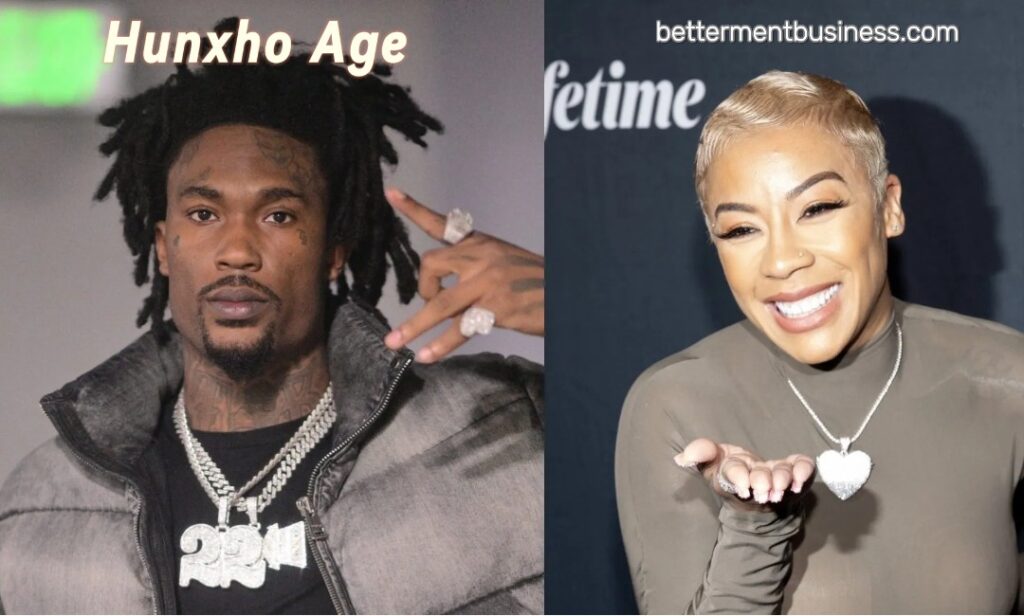Exploring Hunxho Age: Understanding the Background and Significance

Introduction to Hunxho Age
The term “Hunxho age” emerges from a rich tapestry of cultural and social narratives that have evolved over time. It encapsulates a significant period marked by various transformations, particularly in the realms of personal identity, social dynamics, and cultural expression. The origins of the Hunxho age can be traced to specific sociocultural movements that sought to redefine aspects of gender and sexual identity, reflecting broader changes in societal attitudes. Understanding this concept requires an examination of the historical contexts that have shaped its meaning today.
In contemporary discussions, the Hunxho age has gained prominence as it highlights the complexities surrounding gender identity and societal expectations. It serves as a lens through which individuals and communities can engage with and interpret their experiences. The relevance of this term is underscored by ongoing debates around inclusivity, representation, and the fluidity of identity — themes that resonate across various cultures and contexts. This period is not just a reflection of personal or communal experiences; it also signifies a collective recognition of diversity as integral to human experience.
The Etymology of Hunxho
The term “Hunxho” has a complex etymology that reflects its diverse usage across cultures and time. Its origins can be traced back to ancient languages, with influences from both indigenous dialects and more contemporary linguistic frameworks. Originally, “Hunxho” is believed to have derived from a combination of two root words, which collectively embody characteristics associated with strength and resilience. Over the centuries, this term has undergone significant transformations in both spelling and pronunciation, adapting to the phonetic preferences of various cultural groups.
As the understanding of Hunxho evolved, it began to embody a broader array of meanings. In early contexts, it was closely linked to attributes such as bravery and honor. However, as the term was assimilated into different languages and societies, its significance expanded to include notions of community and collective identity. The linguistic shift reflects not just a change in meaning but also the socio-political dynamics of the regions it permeated. Adapting to local customs and traditions made “Hunxho” more relevant in social narratives, enhancing its importance as a symbol of unity and cultural pride.
In contemporary usage, “Hunxho” is often associated with themes of empowerment and resilience, particularly within discussions about social movements and cultural heritage. Its evolution illustrates how language can shape perceptions and values within a community. This semantic journey of Hunxho serves as a reminder of the intricate relationship between language, identity, and historical legacy. Today, the term finds itself in various contexts, from academic discussions to social activism, demonstrating its continued relevance and adaptability in a rapidly changing world. Understanding the etymology of Hunxho not only provides insight into its past but also highlights its significance in present-day discourse.
The Cultural Context of Hunxho Age
The concept of Hunxho age is deeply embedded within various cultural paradigms, offering unique insights into how societies interpret the notions of age and maturity. In many cultures, age is not merely a number; it is imbued with significance that reflects societal values and expectations. Different civilizations hold distinct views on life stages, each shaping perceptions around not only individual maturity but also communal wisdom and experience.
In cultures where the Hunxho age is recognized, there is often a profound respect for the elders, with maturity seen as synonymous with wisdom. This respect cultivates an environment where age is celebrated, and the knowledge that comes with life experiences is valued. For instance, in some Eastern cultures, reaching a certain age might elevate one’s social status, enabling greater authority in family or community matters. Conversely, in others, youth can be regarded as a desirable attribute, leading to an adventurous and vibrant societal landscape where age might not play a central role.
Furthermore, the relationship between age and societal norms extends to the rites of passage that signify transitions in life. Many cultures have specific ceremonies marking the shift into the Hunxho age category, indicating acceptance of one’s responsibilities and societal roles. These cultural rituals reinforce the notion that age progression inherently carries certain expectations that individuals must fulfill, shaping their behavior within the community.
Analyzing how various cultures approach the Hunxho age allows us to appreciate the underlying beliefs that shape their identities. It illustrates how societal constructs around age influence interpersonal relationships, governance, and cultural continuity. Ultimately, these perspectives encourage a deeper understanding of how the concept of Hunxho age affects individuals and communities, revealing the intricacies of human experience shaped by age-related norms.

Hunxho Age in Historical Perspectives
The concept of Hunxho age has manifested at various intervals throughout human history, often reflecting the social, cultural, and political dynamics of specific eras. Originating from ancient philosophies, this notion encapsulates the understanding of maturity and development, which can differ significantly across cultures. As civilizations evolved, so did the interpretation of the Hunxho age, marking it as a significant milestone that signifies readiness and capability within societal roles.
In ancient societies, such as those in China and India, milestones indicative of the Hunxho age were closely tied to rites of passage. For instance, in Confucian thought, reaching a certain age was associated with attaining wisdom and being entrusted with societal responsibilities. These ages often dictated when individuals could participate in governance or make decisions of importance. Historical figures, such as the philosophers Confucius and Mahatma Gandhi, embodied principles associated with the Hunxho age, exemplifying how age could correlate with social ethics and leadership capabilities.
During the Renaissance, the perspective on age shifted once again. The period recognized the importance of intellectual growth and artistic expression, deeming the Hunxho age as not merely a number but a phase of enlightenment and exploration. Noteworthy personalities, including Leonardo da Vinci and Michelangelo, emerged during this time, showcasing the belief that maturity, defined by the Hunxho age, was pivotal in fostering innovation and creativity.
Moreover, contemporary discussions around the Hunxho age emphasize how it plays a critical role in shaping identity and societal perceptions. With changing societal norms, the understanding of maturity is continually evolving, prompting reflections on how the Hunxho age influences current generations. It serves as a lens through which individuals assess personal growth and societal contribution, highlighting its enduring significance across history.
The Modern Interpretation of Hunxho Age
The concept of Hunxho age plays a significant role in how society views the aging process and its associated complexities. In modern times, interpretations of Hunxho age have evolved to embrace a broader understanding beyond mere numerical age. This shift acknowledges the multifaceted nature of aging, where psychological, social, and emotional factors come into play, engendering a comprehensive approach to understanding one’s age and the associated life stages.
Today, many advocate for a perspective that prioritizes health, vitality, and personal fulfillment over chronological age. The contemporary discourse surrounding Hunxho age resonates with the increasing recognition of individuals as active participants in their aging journey. This approach encourages a view that emphasizes quality of life, lifelong learning, and intergenerational engagement, rather than a restrictive definition tied solely to physical limitations often associated with aging.
This aligns with the broader societal movement towards redefining ageism and challenging stereotypes related to older adults. Current perspectives reveal that Hunxho age can significantly influence various societal narratives and practices, particularly regarding employment, healthcare, and social roles. As individuals leverage their experiences and wisdom, they contribute valuable insights and skills, thereby enriching their communities.
Moreover, discussions surrounding Hunxho age reflect present-day challenges, such as adapting to technological advancements and shifts in familial roles. Embracing the idea of an evolving Hunxho age allows us to address isolation, ensure support systems are in place for older adults, and promote policies that recognize the contributions of all age groups. This encourages a cultural shift that embraces diversity in aging experiences, fostering a more inclusive environment for all generational cohorts.
Hunxho Age in Literature and Media
The representation of hunxho age in literature and media encompasses a wide array of themes, characters, and narratives. In many cases, this depiction often reflects the complexities and nuances associated with age and maturity. Authors and creators have increasingly portrayed the hunxho age as a transitional phase, not merely characterized by youth or old age, but as a significant period of growth and transformation. This perspective challenges the conventional definitions of maturity, suggesting a more layered understanding of life stages.
For instance, in contemporary literature, characters within the hunxho age bracket are frequently depicted as navigating significant life events such as love, career trajectories, and personal identity quests. These narratives often highlight the struggles and dilemmas faced by young adults, effectively illustrating the diverse experiences that define hunxho age. Works such as novels and short stories delve into themes of self-discovery and social pressure, enabling readers to resonate with the challenges of this age group.
Additionally, various forms of media, including films and television shows, mirror these literary themes. Characters representing the hunxho age often confront societal expectations and familial obligations, showcasing the complexities of adult responsibilities. Such portrayals can either reinforce or subvert traditional views surrounding age; they challenge stereotypes that suggest maturity is strictly tied to chronological age. In analyzing these representations, one may discern not only the personal struggles of the characters but also broader societal commentary regarding the roles and expectations placed on individuals during hunxho age.
Through these varied depictions across literature and media, a clearer understanding of the significance of hunxho age emerges. This period is depicted not as a definitive stage of life but rather as a pivotal point fostering resilience and personal development. Ultimately, the interplay of narrative and societal themes enriches our comprehension of age and maturity, redefining what it means to reach adulthood.
The Impact of Hunxho Age on Personal Identity
The concept of hunxho age extends beyond mere chronological markers; it serves as a pivotal element in shaping personal identities. This age framework influences how individuals perceive themselves and are perceived by society. In many cultures, particularly in East Asia, hunxho age reflects not only an individual’s stage in life but also their social status and responsibilities. This notion invites a deeper examination of the psychological and social ramifications associated with age, particularly in how it relates to personal identity.
Individuals often find that their self-concept evolves in relation to hunxho age. As individuals transition through various stages of hunxho age, their experiences and societal expectations shift, often redefining their roles within familial and community structures. For instance, in many cases, a person may feel compelled to adopt certain behaviors or attitudes that align with societal norms associated with their hunxho age. This pressure can significantly influence one’s self-esteem and confidence, as individuals navigate the expectations that come along with aging.
From a psychological perspective, the hunxho age may also introduce an internal conflict. Many young adults, for example, experience a disconnect between the chronological age and the societal expectations imposed on them. This sense of dissonance can lead to identity crises or feelings of inadequacy as they grapple with their understanding of what it means to embody their hunxho age. Furthermore, the interactions between individuals of different hunxho ages can impact social dynamics, often leading to the creation of cliques or generational divides that further complicate identity formation.
In conclusion, hunxho age plays a significant role in shaping individual identities by influencing self-perception and societal interactions. Recognizing the importance of this concept can lead to greater understanding and acceptance of diverse identities within various societal frameworks.
Future of Hunxho Age: Trends and Predictions
The concept of hunxho age, which serves as a pivotal point in understanding the multifaceted dynamics of aging, is likely to evolve alongside changing societal norms and advancements in various sectors. As we progress through the 21st century, several trends are emerging that could significantly reshape our perceptions and discussions surrounding age-related topics. To begin with, the increasing life expectancy in many developed countries suggests that individuals are spending more years in their later stages of life. This shift implies that the traditional markers of hunxho age may become less relevant as people redefine what it means to grow older.
Moreover, current trends in health care and technology contribute to this transformation. Innovations in medicine are improving health outcomes for older adults, allowing them to remain active and engaged for extended periods. Consequently, the significance of hunxho age may pivot from merely a number signifying age to one that also encompasses an individual’s health status and lifestyle. Enhanced focus on wellness and lifelong learning can also lead to a more optimistic view of aging, presenting it as a continuing journey rather than a culmination.
Societal attitudes towards age are gradually shifting as well; the stigmatization associated with older adulthood is fading. Younger generations are increasingly advocating for age inclusivity, fostering intergenerational relationships and emphasizing the value of wisdom and experience. This paradigm shift may influence how hunxho age is perceived and celebrated, leading to a more nuanced understanding of its significance.
In essence, the future of hunxho age is intertwined with larger trends in health, societal attitudes, and technological advancements. As we navigate these changes, it becomes essential to recognize that our understanding of aging is not static but rather a fluid concept that can adapt over time. This evolving perspective will ultimately shape our appreciation of the various dimensions of hunxho age in contemporary society.
Conclusion
In reflecting on the concept of Hunxho age, it becomes evident that this notion plays a significant role in shaping our understanding of identity and culture. Throughout this discussion, we explored the diverse implications of Hunxho age, highlighting its relevance not only within specific communities but also in broader societal contexts. The multifaceted nature of age cannot be overlooked; it encompasses not just the biological aspects but also the value systems and cultural practices that inform how individuals experience and perceive age. This understanding encourages a more nuanced dialogue about age and identity that acknowledges the complexities inherent in these concepts.
The significance of Hunxho age in contemporary discussions prompts us to reevaluate our perceptions and the societal constructs surrounding aging. By recognizing the impact of cultural factors on the interpretation of age, we foster a more inclusive perspective that values individual experiences and narratives. Such an approach enables a richer appreciation for the diverse ways in which communities and individuals navigate the concept of age.
Encouraging ongoing engagement in discussions related to Hunxho age is paramount for fostering awareness and promoting understanding across various contexts. The importance of these discussions cannot be overstated; by embracing the intricacies of Hunxho age, we promote inclusivity and respect for varied life experiences. As societies continue to evolve, this acknowledgment can lead to more equitable interactions and a greater appreciation for the cultural narratives surrounding age. Therefore, it is essential for readers and scholars alike to remain engaged in this dialogue, reflecting on how age shapes our lives and identities in dynamic and ever-changing ways.
Also Read bettermentbusiness.com



